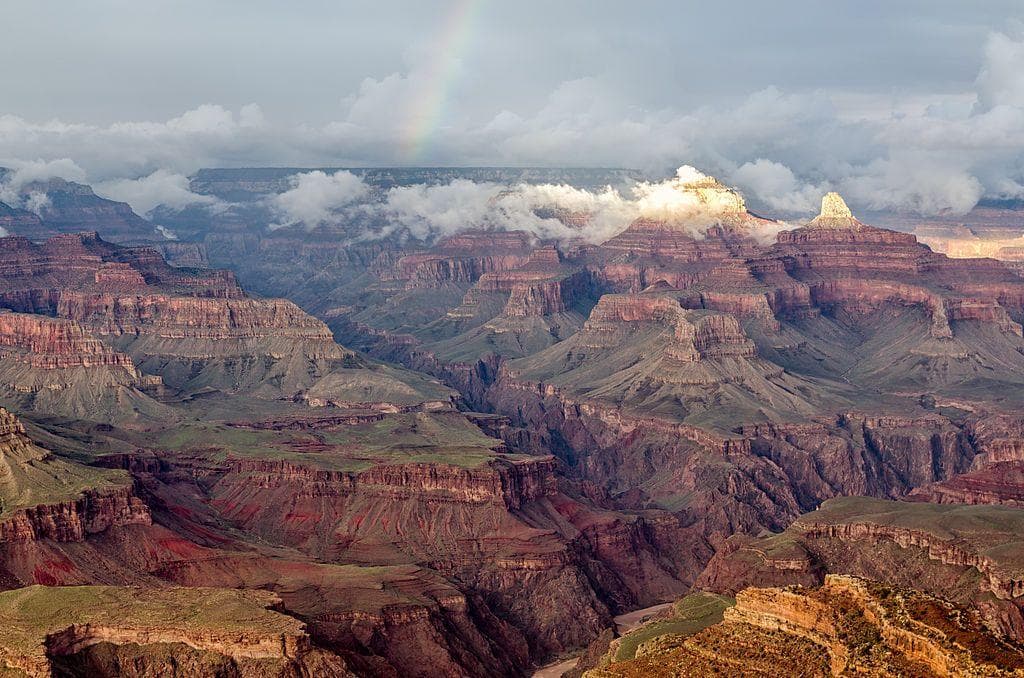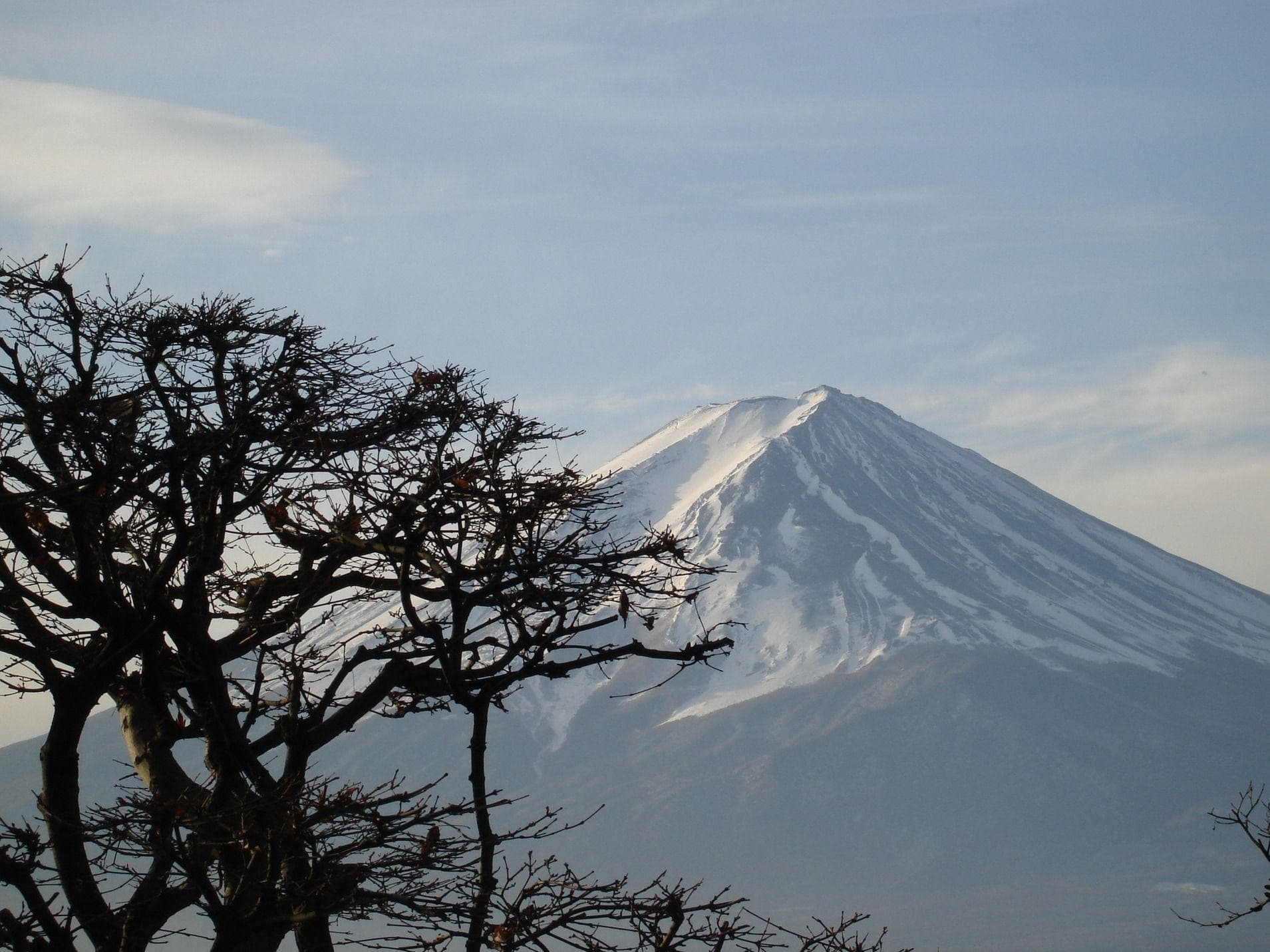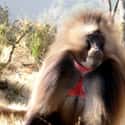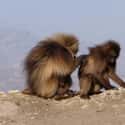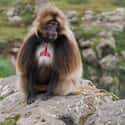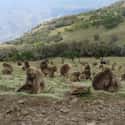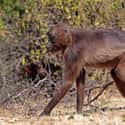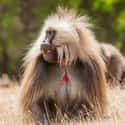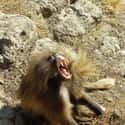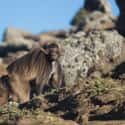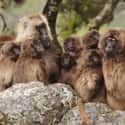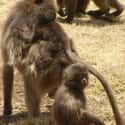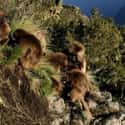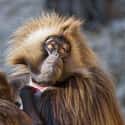-
(#1) Geladas Are Vegetarians That Eat For 10 Hours Everyday
Geladas are known for their excessively vegetarian lifestyle. They are graminivores, meaning their diet consists of 90% grass. They are the only living primates who live off almost entirely on grass, a trait more common in ungulates like deer and cattle than monkeys. Grass isn’t the richest source of food in nature, so geladas must eat constantly to get the nutrients they need to survive. To supplement their diet, geladas will eat flowers and dig into the ground to get at the nutrient rich roots below the surface. According to the BBC special Monkey Planet, geladas can spend up to 10 hours every day gorging themselves on grass, meaning they are eating for most of their waking life.
-
(#2) Theirs Are The Most Developed Opposable Thumbs Of All Wild Primates
To make sure they are eating only the finest blades of grass, geladas have developed an impressive thumb and index finger known as the most advanced of all primates besides human beings. They can use their nimble fingers to pluck individual blades of grass from the ground, and they have proven to be picky eaters. If a blade seems too dry, they will pass it over for one that looks a bit more fresh. This adaptation and keen eye for quality allows the geladas to maximize their daily nutritional intake.
-
(#3) Geladas Perform Coordinated Raids On Human Farms
Like all primates, geladas are highly intelligent creatures with the ability to perform some levels of higher reasoning. They also have the ability to communicate with one another, and can even organize raiding parties to try and steal food from farmers. Though conflict with humans has increased, the situation has come to a head when humans started farming on the gelada's native land. With their feeding grounds disappearing, geladas are at a higher risk of starvation and may be performing these high-risk raids as an act of desperation.
-
(#4) Gelada Baboons Graze In Massive Herds So Big They're The Second Largest Primate Gatherers (Next To Humans, Of Course)
While many primates are known to live in extended social groups, geladas take it a step further than most. While gelada families can be quite large in their own right, when families come together they can create massive mega-herds that fill the mountain meadows. Up to 1,200 geladas can gather together in a single location, which is one of the largest gathering of primates outside of human settlements. Because they are primarily grazers and grass is a plentiful resource in their environment, geladas can exist together in extremely large groups without creating any significant levels of competition between them.
-
(#5) Their Butts Have Evolved Cushions For Extra Comfort
Sometimes evolution gives the world a treat it didn’t even know it needed. Because geladas spend most of their days picking through grass while sitting on their rumps, these primates have developed an extra layer of leathery padding on their rear-ends to help make feeding time a bit more comfortable. Their padded buttocks are known as ischial callosities. What’s more, some geladas will choose to scoot around in the seated position instead of walking while they are grazing, which basically means they shuffle around on their tough butts all day.
-
(#6) They Have A Distinctive 'Heart' On Their Chests
Geladas have sometimes been called “bleeding heart” baboons because of the unusual strips of coloration on their chests. While they are mostly covered in fur, geladas have bald chests which expose a distinctive red patch of skin right in the center of their chest. This bizarre feature is very important for the geladas, especially when it comes to mating. When a female gelada is ready to mate, her chest flushes bright red to signal to the nearby males she's in estrous. The chest of the males will also become red when they are flushed with testosterone, and the largest, alpha males tend to have the brightest displays.
-
(#8) They Sleep On The Edges Of Cliffs
These primates can be found at elevations peaking at about 16,000 feet above sea level, living in the mountainous meadows of northern Ethiopia. If life at high elevations wasn't dare-devilish enough for these fearless primates, geladas choose to fall asleep on the dangerous cliff-side ledges of the mountains. After a days worth of intense grazing and social activity, geladas will climb down the sharp cliff faces and huddle together in groups for a full nights sleep on the rocky precipices.
-
(#9) They Have A Complicated Social Hierarchy
As primates, it’s no surprise that geladas have complicated social structures with multiple class distinctions. Like many other species, families are dominated by an alpha male who has special privileges in the tribe. However, they often do not claim exclusive mating rights with the females of the group.
Research has shown many alphas will allow younger males into his group, bachelors who will attempt to mate with members of the alpha's harem. While this may seem like a bad deal for the alpha, it actually benefits the group. Even though the alpha has some competition from the younger males, on average he will still father about 83% of the children. The added defense benefit of having a few extra males around makes this a good deal for everyone involved.
-
(#10) They Are The Last Of The Grazing Primates
Geladas are the last living representatives of the genus Theropithecus, a once-prosperous group of primates that roamed the plains of Africa and Asia. They are distinct from other primates for their graminivorous diet, the only ones known to feed almost exclusively on grass.
While geladas were once common in the highlands of Ethiopia, their numbers have reduced dramatically due to urban and agricultural development in their habitat. They are not listed as endangered, their population has declined by roughly 50% in the last several decades. If they continue to lose their territory to humans, the Theropithecus branch of the primate tree may disappear for good.
-
(#11) They Live In The Mountains Of Ethiopia
Geladas are indigenous to the mountainous peaks of northern Ethiopia. They have adapted to a high altitude lifestyle and are known to be tremendous climbers, living in a range of 6,000 to about 16,000 feet above sea level. The once numerous species of the genus Theropithecus used to live in a range that stretched from Africa to India, but what's left of the grass-eating primates can now only be found on the cliff faces of east Africa.
-
(#12) They Aren't Actually Baboons
Geladas are often referred to as baboons, and that comparison is not without merit. There are many physical similarities between geladas and baboons, but a few key differences separate them tremendously. All true baboons are classified under the genus Papio, an omnivorous group of primates which scientists once believed held geladas in their ranks. Further study has revealed they are actually the only living members of the genus Theropithecus, a near-extinct group of primates who feed themselves almost completely by grazing in vast meadows.
New Random Displays Display All By Ranking
About This Tool
In the animal kingdom, there are more than 200 known species of monkeys. Most of the monkeys are omnivorous and dominated by plants, and they do not give up meat. The only monkey breed that eating grass is the gelada baboons. Gelada baboons are known as the king of cliffs because of their very strong climbing ability. Gelada baboons populations are mainly distributed in the highlands of Ethiopia and Eritrea at 2000-5000 meters above sea level, especially on steep cliffs up to 100 meters high.
The lion-tailed baboon is the only primate species that feeds on grass, but gelada baboons all have a pair of scary fangs, which seem to be as strong as a beast. Welcome to check the random tool if you are interested in more fascinating facts about gelada baboons, there are 12 details.
Our data comes from Ranker, If you want to participate in the ranking of items displayed on this page, please click here.








